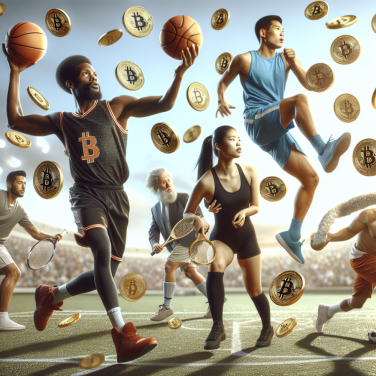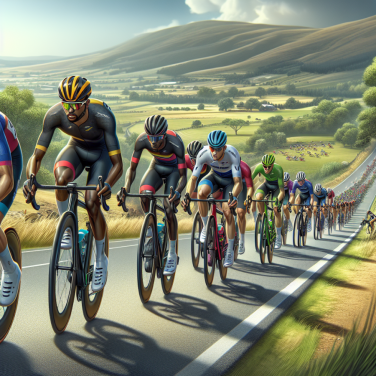How Pop Culture and Media Influence Bolstered Boxing's Popularity Globally
Major sporting events like the Olympics, the World Cup, and the Super Bowl often dominate global headlines and trends. However, boxing, an individual combat sport, continues to captivate viewers and generate a massive global following. One critical factor contributing to boxing's growing popularity is the significant influence of pop culture and media.
Starting with Muhammad Ali's iconic status in the 1960s, the charisma, prowess, and towering personalities portrayed in the boxing industry have resonated wide and far beyond the ring. The charisma of these boxers created a persona that people across the globe could connect with. The impact of these personalities became even more prevalent with the growth of global television networks and social media platforms. It provided a unique avenue for boxers to build a solid fan base around the world.
As the sport grew, so did its representation in the media. Cinema played a crucial role in romanticizing and broadening boxing's appeal. The 1976 film “Rocky" is an excellent example of how a boxing-themed movie managed to catapult the sport into a new level of global recognition. The “Rocky" franchise, spanning over four decades, has significantly influenced generations of boxing fans.
Similarly, movies such as "Raging Bull," "Million Dollar Baby," and "The Fighter" present narratives that draw audiences into the ring, revealing the heart, grit, and determination it takes to succeed in the sport. These boxing depictions in cinema have not only increased boxing's visibility in global pop culture but have also added depth to the public's understanding of the sport.
More recently, the rise of digital media and streaming services has further propelled boxing into the mainstream. Platforms like YouTube and DAZN offer live matches, creating easy accessibility for fans to tune into fights from anywhere globally. These platforms also provide ancillary content like fighter interviews and training videos, enriching the fan experience.
Social media has emerged as another powerful tool in promoting the sport. It allows boxers to engage with fans directly, offering unprecedented access into their lives and training routines. Fans feel a personal connection with these athletes, even more, solidifying their fandom. Boxers like Floyd Mayweather and Manny Pacquiao boast millions of followers on their social media accounts, enhancing their global influence and driving interest in their bouts.
Sponsorship deals with large companies and brands have also brought boxing into the limelight.
Read also:
Should Soccer Cleats Be Tight-Fitted? Debunking the Myth
Tracing the Historical Journey of Boxing: From Ancient Greece to Modern Arenas
Boxing is believed to have originated in Ancient Greece, where it was a vital part of the Olympic Games by 688 BC. Similar to today's boxing, fighters of that era wrapped their hands with leather strips for protection; however, they fought outdoors, in open-air arenas with no ropes to restrain the opponents within a designated fighting space. Fighters were heavily built and muscular but did not categorize themselves based on weight divisions. In addition, there were no rules to restrict the number of rounds, leading to matches lasting until a fighter acknowledged defeat or could no longer physically engage in the competition.
With the fall of Greece, the popularity of boxing swept through the Roman Empire. Roman Boxing introduced the 'Cestus', a lethal type of glove made of metal and leather, making the sport much more dangerous than its previous forms. The brutality of these matches often resulted in the death of one or both contestants. However, the sport lost favour with the Roman elite, and it eventually disappeared around the 5th century AD with the fall of the Roman Empire.
Boxing, reinstalling somewhat a more civilized form, resurfaced in England around the 17th century, where bare-knuckle fights became popular events boasting large amounts of money on bets. The sport was still brutal by today's standards and frequently led to severe injuries or death. The turning point came in 1743 with the introduction of the 'Broughton's rule', formulated by Jack Broughton, the "Father of English Boxing". These regulations protected fighters inside the ring, offered an improvised form of gloves, and officially introduced the "count" in boxing matches.
The modern sport of boxing emerged in the 19th century, most notably with the 1867 introduction of the 'Marquess of Queensberry rules'. These rules mandated the use of gloves, established three-minute rounds with one-minute rest intervals, and laid out the 10-second knockout count still used today. Moreover, this spawned formal weight divisions, restricting matches to opponents of similar size and weight.
During the early 20th century, boxing expanded globally, eventually cementing itself in the worldwide sporting culture—producing legends such as Jack Johnson, Jack Dempsey, Joe Louis, Muhammad Ali, and countless others. These figures were instrumental in popularizing the sport further and contributed to its evolution.
The boxing industry underwent even more significant changes in the late 20th century, where fights were broadcasted on national television for the first time.




